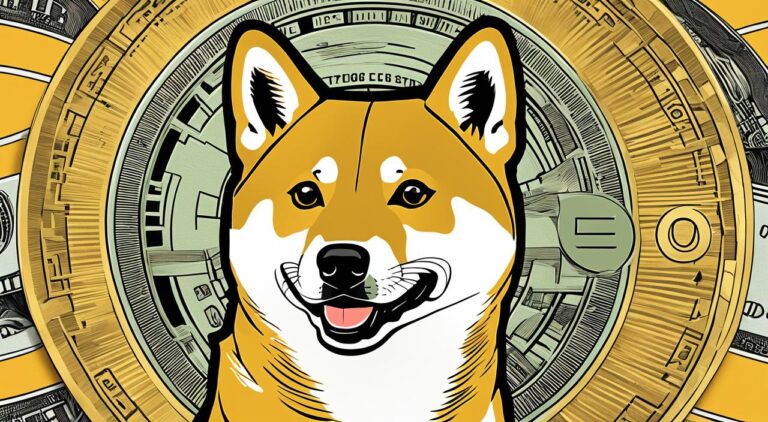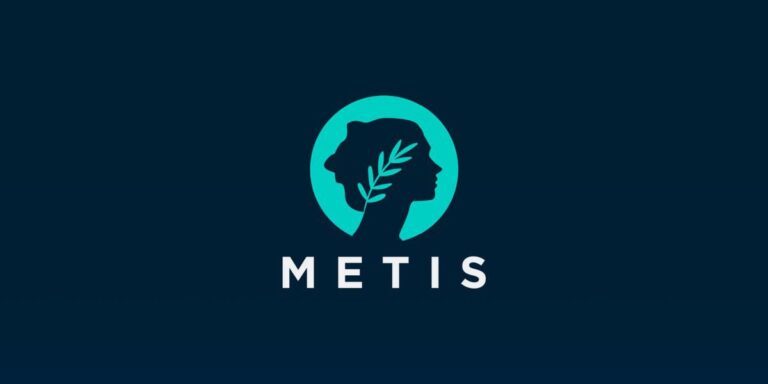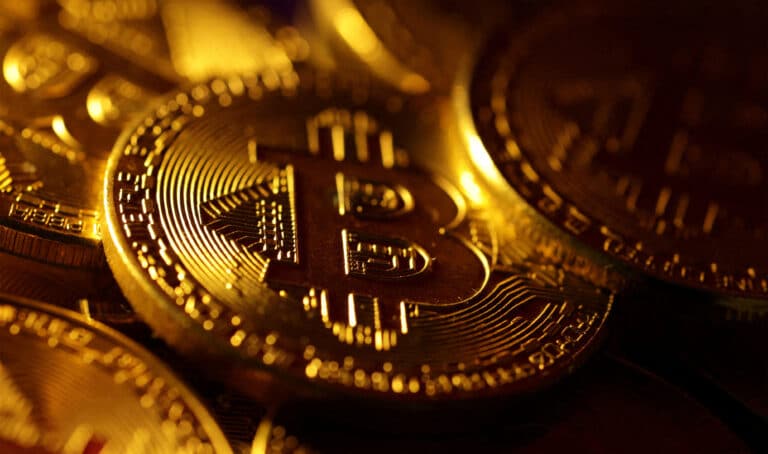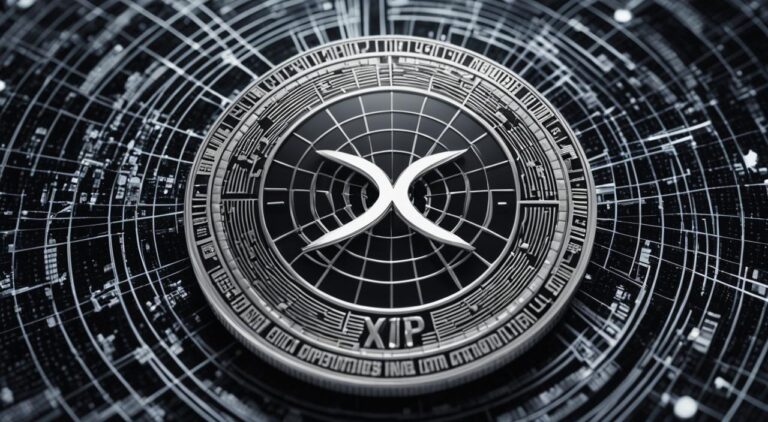What is Cardano: Next-Gen Blockchain Platform

What is Cardano?
Cardano is a decentralized proof of stake (PoS) blockchain platform designed to create a secure and sustainable ecosystem for cryptocurrencies and smart contracts. It aims to provide a more balanced and efficient infrastructure for transactions and decentralized applications. Cardano stands out by using a unique proof-of-stake algorithm called Ouroboros, designed to be more energy-efficient than other methods while ensuring high security and scalability.
Key Takeaways:
- Cardano is a decentralized proof of stake (PoS) blockchain platform designed to be a more efficient alternative to proof of work (PoW) networks.
- It aims to be a decentralized application (dApp) development platform with a multi-asset ledger and verifiable smart contracts.
- Cardano runs on the proof-of-stake Ouroboros consensus protocol using its native token, Ada.
- The platform was founded in 2015 by Charles Hoskinson, one of the co-founders of Ethereum.
- Cardano distinguishes itself from Bitcoin by offering a scalable infrastructure for creating tokens, dApps, and other blockchain network uses.
History of Cardano (ADA)
Cardano, founded in 2015, is a third-generation blockchain platform that has made significant advancements in the cryptocurrency space. The platform was co-founded by Charles Hoskinson, who was also involved in the creation of Ethereum.
With its launch in 2017, Cardano aimed to position itself as an updated version of Ethereum, offering similar functionalities such as smart contracts. However, Cardano distinguishes itself using a proof-of-stake consensus algorithm called Ouroboros, improving energy efficiency and scalability.
As a third-generation blockchain platform, Cardano strives to address the limitations of previous blockchain networks and provide a more secure, scalable, and sustainable infrastructure. It seeks to offer efficient banking services to the unbanked population, fostering financial inclusion.
To better understand the history and evolution of Cardano, let’s take a closer look at the key milestones and contributions made by Charles Hoskinson and the team behind this innovative project.
Key Milestones in Cardano’s History
- 2015: Cardano’s journey begins with the establishment of IOHK (Input Output Hong Kong) by Charles Hoskinson and Jeremy Wood. IOHK becomes the primary development company responsible for building and maintaining Cardano’s blockchain platform.
- 2017: Cardano’s first development phase, Byron, is launched, marking the introduction of Ada, the native cryptocurrency of the Cardano network. During this phase, the team focuses on network stability and security.
- 2018: Cardano’s second development phase, Shelley, commences. Shelley aims to decentralize the Cardano network by allowing stakeholders to actively participate in the network’s operation.
- 2020: The implementation of Cardano’s third development phase, Goguen, begins. Goguen focuses on introducing smart contract functionality, enabling developers to build decentralized applications (dApps) on the Cardano platform.
- 2021: Cardano progresses with the Alonzo hard fork, further expanding its smart contract capabilities. This update opens the door for creating non-fungible tokens (NFTs) and facilitates various use cases within the Cardano ecosystem.
Charles Hoskinson: A Driving Force Behind Cardano
“Cardano represents a fundamentally different way of thinking and approaching the challenges of building a sustainable, secure, and scalable blockchain platform. We envision Cardano as a financial operating system for the unbanked and underserved, bringing financial inclusion to millions worldwide.”
Charles Hoskinson’s involvement in the blockchain industry extends beyond Cardano. As one of the co-founders of Ethereum, Hoskinson contributed significantly to the development of the Ethereum network. His deep understanding of blockchain technology and commitment to innovation have been instrumental in shaping Cardano’s vision and progress.
Under Hoskinson’s leadership, Cardano has garnered a strong community of developers, users, and enthusiasts dedicated to realizing the platform’s potential and driving its adoption. With a robust foundation and a clear roadmap, Cardano is poised to make a lasting impact on the world of blockchain technology.
As we delve deeper into Cardano’s features, benefits, and applications, it becomes evident that this third-generation blockchain platform holds immense promise for the future of decentralized finance and beyond.
Is Cardano a Good Investment?
When considering whether Cardano is a good investment, it’s important to look at several key factors. First, Cardano’s unique approach to blockchain with its Ouroboros proof-of-stake algorithm offers a more energy-efficient and scalable infrastructure compared to traditional proof-of-work systems. This positions Cardano as a potentially more sustainable and future-proof option in the blockchain space.
Secondly, the ongoing development and research-driven approach of Cardano indicate a commitment to continuous improvement and adaptation. Its layered architecture and updates aim to address issues such as scalability, interoperability, and sustainability, which are critical for long-term success.
However, like any investment, Cardano comes with risks. The cryptocurrency market is highly volatile and speculative, and while Cardano has a strong community and solid technological foundation, its success also depends on wider market adoption and regulatory environments. Additionally, as the blockchain and cryptocurrency space is rapidly evolving, new competitors and technologies could impact Cardano’s position.
Potential investors should consider their risk tolerance, do thorough research, and possibly consult with a financial advisor. While Cardano shows promise due to its innovative approach and strong community, it’s crucial to understand that its future, like that of any cryptocurrency, is uncertain and subject to various external factors.
Cardano vs. Bitcoin
When comparing Cardano and Bitcoin, it becomes evident that there are key differences between the two popular cryptocurrencies. While Bitcoin functions primarily as a peer-to-peer payment system, Cardano offers a comprehensive ecosystem beyond transactions.
As a blockchain platform, Cardano provides developers with the tools and capabilities to create tokens, decentralized applications (dApps), and other scalable network uses. This versatility positions Cardano as an ideal platform for innovation and growth in the blockchain space.
One notable contrast between Cardano and Bitcoin lies in their consensus mechanisms. Bitcoin operates on the energy-intensive proof-of-work (PoW) algorithm, which requires miners to compete in solving complex mathematical puzzles to validate transactions. In contrast, Cardano employs the more energy-efficient proof-of-stake (PoS) protocol called Ouroboros. PoS reduces energy consumption and eliminates the need for mining, making Cardano a greener and more sustainable option.
“Cardano’s Ouroboros PoS protocol promotes energy efficiency in blockchain networks, making it an attractive alternative to Bitcoin’s PoW algorithm.”
Cardano aims to address the environmental concerns typically associated with cryptocurrency mining by prioritizing energy efficiency. This approach aligns with the growing focus on sustainability and the need for more environmentally conscious blockchain solutions.
While Bitcoin has established itself as a widely recognized cryptocurrency for transactions, Cardano seeks to build an extensive ecosystem that fosters innovation, scalability, and energy efficiency. By leveraging the advantages of the PoS consensus mechanism, Cardano offers a compelling alternative to Bitcoin, paving the way for more sustainable blockchain networks.
Comparison of Cardano and Bitcoin
| Aspect | Cardano | Bitcoin |
|---|---|---|
| Consensus Mechanism | Proof of Stake (Ouroboros) | Proof of Work |
| Ecosystem | Allows developers to create tokens, dApps, and scalable blockchain uses | Primarily functions as a peer-to-peer payment system |
| Energy Efficiency | Uses the PoS protocol to reduce energy expenditure and eliminate mining | Relies on the energy-intensive PoW algorithm |
How to buy Cardano (ADA)
To start with Cardano (ADA), you can purchase the cryptocurrency on various reputable cryptocurrency exchanges. Here are some popular exchanges where you can buy Cardano:
- Binance
- Coinbase
- Kraken
- Bitfinex
These exchanges provide a user-friendly interface, secure storage, and a wide range of trading pairs. You can create an account on any of these exchanges and follow their instructions to buy Cardano using fiat currency or other cryptocurrencies.
Pro Tip: Before purchasing Cardano, make sure to do your research and compare exchange rates, fees, and security measures offered by different platforms. This will help you find the best option that suits your needs.
Once you have purchased Cardano, you can hold it or participate in the Cardano network by staking your ADA, which we will discuss next. Staking allows you to earn passive income by locking up your ADA and contributing to the security and stability of the network.
To store your ADA, you can use popular staking wallets such as:
- Yoroi Wallet
- Daedalus Wallet
- Exodus Wallet
These wallets provide a seamless staking experience and allow you to delegate your ADA to staking pools to maximize rewards. You can find staking pool options within these wallets or explore community-built tools like ADApools.org, Cardanoscan.io, Pool.pm, Poolstats.org, or Pooltool.io to find and compare different staking pools.
By buying Cardano and staking your ADA, you can actively participate in the Cardano ecosystem and potentially earn rewards while supporting the network’s security and growth.
Cardano Exchanges Comparison Table:
| Exchange | Trading Fees | Supported Countries | User-Friendliness | Security |
|---|---|---|---|---|
| Binance | Low | Global | High | High |
| Coinbase | Medium | Multiple | High | High |
| Kraken | Low | North America, Europe | Medium | High |
| Bitfinex | Medium | Global | Medium | High |
What is Cardano Staking?
In Cardano’s proof-of-stake system, staking is crucial in determining a node’s capability to open blocks on the blockchain. Users can participate in the network’s consensus mechanism by staking ADA and earning rewards through additional ADA tokens. Staking allows ADA holders to actively contribute to the security and maintenance of the Cardano ecosystem while earning passive income.
One way to stake ADA is by joining or creating staking pools. Staking pools are groups of ADA holders who combine their staking power to increase the chances of generating blocks and earning rewards. Participants can overcome the technical requirements and maintenance costs of running a standalone staking node by pooling their ADA together. Furthermore, staking pools allow participants with smaller amounts of ADA to earn rewards, as their stake is combined with others in the pool.
Stake pool operators play a crucial role in the Cardano ecosystem. They are responsible for the day-to-day operations of the staking pool, including transaction processing, block production, and maintaining the necessary infrastructure. These operators ensure the smooth functioning of the staking pool and distribute the rewards earned among the pool participants based on their contributions.
| Benefits of Cardano Staking | Considerations for Staking Pools |
|---|---|
|
|
Staking ADA in Cardano allows small and large investors to earn rewards while actively participating in the network’s consensus protocol. By joining or creating staking pools, ADA holders can contribute to the security and decentralization of the Cardano blockchain while enjoying the benefits of passive income. It is essential to carefully select reputable stake pools and consider various factors before delegating ADA to ensure a rewarding staking experience.
How To Stake Cardano?
Cardano allows users to actively participate in the staking and validation process through stake pools. By staking their ADA, users can contribute to the security and operation of the Cardano blockchain while earning rewards. Staking pools are trusted server nodes that facilitate the validation of transactions on the network.
Stake pool operators serve a pivotal role in maintaining and managing these pools. They ensure the proper functioning of the pool, perform administrative tasks, and uphold the integrity of the staking process. Stake pool operators play a crucial role in the decentralization and stability of the Cardano network.
Staking pools can be categorized as either public or private. Public pools allow any ADA holder to stake their tokens and become part of the pool, contributing to the overall security and consensus of the blockchain. Public pools distribute rewards to their members based on the amount of ADA they have staked, providing a fair and transparent process for all participants.
On the other hand, private pools are exclusive to a limited number of participants, typically requiring an invitation or meeting certain criteria to join. These pools may have specific requirements or preferences, such as a shared interest or partnership.
Cardano staking pools enable ADA holders to actively participate in the blockchain’s security and consensus process while earning rewards. Stake pool operators play a vital role in maintaining and managing these pools, ensuring their proper functioning and contributing to the decentralization of the Cardano ecosystem.
Benefits of Cardano Staking Pools
Staking pools offer several benefits to ADA holders:
- Increased chances of receiving rewards: By pooling their resources with other participants, ADA holders have a higher chance of earning rewards consistently.
- Simplified staking process: Joining a staking pool eliminates the need for individual participants to set up and maintain their staking infrastructure.
- Reduced technical requirements: Stake pool operators handle the technical aspects of staking, making it easier for participants to engage in the process without extensive technical knowledge.
- Enhanced decentralization: Through the participation of various stakeholders in staking pools, Cardano achieves a decentralized network resistant to central control.
Staking Pools for Cardano
Cardano staking pools are community-driven networks where ADA holders can delegate their stake and earn rewards. These pools are managed by stake pool operators and offer a convenient way to participate in the staking process. Here are a few community-built tools that can help you find and choose the right staking pool:
These tools provide valuable information on pool performance, rewards, fees, and other relevant metrics. They can assist you in making an informed decision when selecting a staking pool for your ADA.
Wallets for Staking Cardano
Cardano can be staked using various wallets that support ADA staking. Here are some popular options:
- Yoroi wallet
- Daedalus wallet
- Binance wallet
- Exodus wallet
Yoroi and Daedalus are two official wallets recommended by the Cardano team. Yoroi is a lightwallet available as a browser extension, while Daedalus is a full desktop application developed by IOHK. These wallets provide seamless integration with the Cardano network, allowing you to stake your ADA and monitor your rewards.
Binance wallet is another option that supports Cardano staking. As one of the largest cryptocurrency exchanges, Binance offers a convenient way to stake ADA and manage funds. However, it’s important to note that using a third-party wallet like Binance means you don’t have direct control over your keys, so consider the trade-offs before making a decision.
Regardless of your wallet, the staking process typically involves delegating your ADA to a pool of your choice and earning rewards based on your stake. It’s important to conduct thorough research and consider factors such as pool performance, fees, and reputation before staking your ADA.
Now that you know where to stake Cardano and the wallets that can be used, you can start earning rewards through the staking process. Stay updated with the latest developments in the Cardano ecosystem for any changes or new opportunities.
Comparison of Public and Private Staking Pools
The table below provides a comparison between public and private staking pools:
| Public Staking Pools | Private Staking Pools |
|---|---|
| Open to all ADA holders | Restricted to specific individuals or organizations |
| Transparent and accessible | Selective and exclusive |
| Participation based on staked ADA amount | Invitation or specific criteria required |
| Allows for wider distribution of rewards | Potential for increased collaboration within a specific group |
As demonstrated, public and private staking pools offer unique advantages and cater to different preferences within the Cardano community. Public pools prioritize inclusivity, transparency, and broader distribution of rewards, while private pools provide a more exclusive, collaborative environment for participants with shared interests or goals.
Cardano Smart Contracts
Cardano, one of the leading next-generation blockchain platforms, has introduced smart contract capabilities with its highly anticipated Alonzo update in 2021. This major development allows users to create and deploy smart contracts on the Cardano blockchain, opening up exciting possibilities for decentralized applications and programmable digital assets.
The Alonzo update ushers in a new era for Cardano, enabling the platform to support various use cases, including non-fungible tokens (NFTs), decentralized finance (DeFi) applications, and much more. Cardano aims to revolutionize industries and drive innovation on its secure and scalable blockchain network by incorporating smart contracts.
With the ability to create smart contracts, developers can now build sophisticated applications that leverage automation, immutability, and trustlessness. These contracts enable the execution of self-executing agreements, eliminating the need for intermediaries and enhancing transparency.
Furthermore, the Alonzo update empowers users to manage multiple assets directly on the Cardano blockchain. Individuals and businesses can tokenize their real-world assets, create their digital currencies, or participate in the burgeoning NFT market on a secure and efficient platform.
Cardano’s dedication to scientific research and rigorous peer review sets it apart from other blockchain platforms. The implementation of smart contracts follows a meticulous approach, ensuring that they are robust, secure, and capable of meeting the demands of real-world applications.
Benefits of Cardano Smart Contracts
The introduction of smart contracts on Cardano brings several notable benefits:
- Scalability: Cardano’s innovative architecture allows for the seamless scaling of smart contract capabilities, ensuring efficient execution and broad usability.
- Security: The rigorous development process and formal verification methods employed by Cardano contribute to the platform’s robust security, protecting users and their assets.
- Interoperability: Cardano’s commitment to interoperability enables seamless integration with external systems and platforms, fostering collaboration and expanding the ecosystem.
- Sustainability: The Cardano blockchain’s proof-of-stake consensus mechanism ensures energy efficiency, making it eco-friendly and sustainable compared to energy-intensive proof-of-work networks like Bitcoin.
As the Cardano ecosystem continues to evolve, further advancements in smart contract functionality can be expected. The dedicated development team behind Cardano envisions future updates and forks that will expand the capabilities and use cases of smart contracts on the platform, enabling even more innovative and impactful applications.
To illustrate the growth and potential of Cardano smart contracts, the following table provides a comparison of key features and capabilities:
| Platform | Smart Contract Support | Non-Fungible Token (NFT) Support | Asset Management |
|---|---|---|---|
| Ethereum | Yes | Yes | Yes |
| Cardano | Yes | Yes | Yes |
Note: This table is for illustrative purposes only and does not capture each platform’s full range of features and capabilities.
With the implementation of smart contracts and their myriad possibilities, Cardano is poised to revolutionize how we interact with blockchain technology. Cardano offers a robust and secure platform for innovation and growth, whether creating decentralized applications, issuing digital assets or participating in the exciting world of NFTs.
Future of Cardano
Cardano is a blockchain platform that follows a roadmap divided into distinct eras. Each era is named after a notable figure in poetry and computer science history, signifying the platform’s continuous evolution. The final era, Voltaire, represents the future direction of Cardano, with its focus on governance, voting, and treasury management.
Voltaire is set to bring significant advancements to the Cardano network through smart contract functionality and system improvements. This era aims to empower the community by allowing them to actively participate in decision-making processes and fund projects that align with their interests.
With the implementation of Voltaire, Cardano will achieve full decentralization, ensuring that the blockchain and network are in the hands of the community. This decentralized governance model will enable Cardano to be developed, maintained, and kept secure by its users, fostering a truly democratic and inclusive ecosystem.
IOHK, the research and development company behind Cardano, is committed to completing the Voltaire era. Once achieved, this milestone will mark a significant step forward for Cardano, solidifying its position as a leading blockchain platform.
Cardano Roadmap
The Cardano roadmap outlines the planned development and milestones for the platform. It provides a clear path for implementing and optimizing features, ensuring the continuous growth and improvement of the ecosystem.
Key components of the Cardano roadmap include:
- Byron: The initial phase of deployment and stabilization. This era focused on building the foundation for the Cardano network.
- Shelley: The introduction of decentralized staking and the creation of stake pools on the Cardano blockchain, increasing network security and resilience.
- Allegra: Implementing token locking and time-based functionality, enhancing Cardano’s smart contract development and deployment capabilities.
- Mary: The addition of multi-asset support to the Cardano blockchain enables the creation and transfer of various digital assets, including non-fungible tokens (NFTs).
- Goguen: The integration of smart contract functionality, allowing developers to build decentralized applications (dApps) on the Cardano network.
- Basho: The optimization and improvement of Cardano’s scalability and performance, ensuring seamless operation and handling of increasing transaction volumes.
- Voltaire: The final era focused on decentralized governance, voting systems, and treasury management on the Cardano network.
The Cardano roadmap demonstrates the platform’s continuous development and commitment to bringing innovative solutions to the blockchain space.
Voltaire: Bringing Governance and Decentralization to Cardano
The Voltaire era is the culmination of Cardano’s development journey, focusing on governance, voting systems, and treasury management. Through the implementation of smart contract functionality, this era will enable Cardano to achieve full decentralization.
Voltaire aims to empower the community by allowing every ADA holder to propose and vote on system-wide improvements and fund projects of their choice. This democratic governance model ensures that the Cardano network evolves based on its users’ consensus and collective wisdom.
With the introduction of decentralized treasury management, Cardano will establish a sustainable funding mechanism for pivotal projects, fostering innovation and growth within the ecosystem. By enabling individuals to submit and vote on funding proposals, Cardano ensures that resources are allocated efficiently and transparently.
Voltaire represents the future of Cardano, where the community plays an active role in shaping the platform’s direction and governance. It is built on the principles of openness, inclusivity, and collaboration, creating a truly decentralized ecosystem that embraces the power of collective decision-making.
Cardano Exchanges Comparison Table:
| Exchange | Trading Fees | Supported Countries | User-Friendliness | Security |
|---|---|---|---|---|
| Binance | Low | Global | High | High |
| Coinbase | Medium | Multiple | High | High |
| Kraken | Low | North America, Europe | Medium | High |
| Bitfinex | Medium | Global | Medium | High |
Conclusion
Cardano is a next-generation blockchain platform that stands out for its secure and scalable infrastructure, making it a prime choice for decentralized applications and smart contracts. With a strong emphasis on scientific research and innovative proof-of-stake consensus mechanisms, Cardano offers advanced technology, energy efficiency, and sustainability. Its modular architecture, interoperability, and robust governance model contribute to its immense potential for disrupting industries and creating real-world impact.
By staying updated with the latest developments in the Cardano ecosystem, you can position yourself to take advantage of future advancements and opportunities. With its commitment to evolving the platform and addressing the needs of its users, Cardano shows promising potential for transforming how we interact with blockchain technology.
Whether you are an investor, developer, or enthusiast, Cardano’s vision of a decentralized future is worth keeping a close eye on. As the platform continues to evolve and grow, it promises to enable innovative solutions and open doors to new possibilities. Make sure to stay informed about Cardano and its ongoing journey towards revolutionizing the world of blockchain.
FAQ
What is Cardano?
Cardano is a decentralized proof of stake (PoS) blockchain platform designed to be a more efficient alternative to proof of work (PoW) networks. It is a next-generation blockchain platform that aims to provide a secure and scalable infrastructure for decentralized applications and smart contracts.
How does Cardano differ from Bitcoin?
While Bitcoin is primarily a peer-to-peer payment system, Cardano is an ecosystem that allows developers to create tokens, decentralized applications, and other scalable blockchain network uses. Additionally, Cardano uses a proof-of-stake consensus mechanism, making it more energy-efficient than Bitcoin’s proof-of-work algorithm.
What is Cardano staking?
Cardano staking is the process of holding and securing ADA (Cardano’s native cryptocurrency) in a wallet to support the operations of the blockchain network. Users can earn rewards by staking ADA based on the amount of ADA they have staked.
How do Cardano staking pools work?
Cardano staking pools are trusted server nodes that conduct the work of validating transactions on the blockchain. Users can join or create staking pools; pool operators are responsible for transaction processing and block production. Rewards are distributed to members of public pools based on their staked ADA.
What are Cardano smart contracts?
Cardano smart contracts are self-executing contracts with predefined rules and conditions stored on the blockchain. With smart contract support through the Alonzo update, users can create smart contracts and non-fungible tokens (NFTs), and manage multiple assets on the Cardano blockchain.
Where can I stake Cardano?
Users can stake Cardano by participating in various staking pools using community-built tools such as ADApools.org, Cardanoscan.io, Pool.pm, Poolstats.org, or Pooltool.io. Wallets such as Yoroi, Exodus, Binance, or Daedalus can also be used for staking ADA.
What is the future of Cardano?
Cardano follows a development roadmap divided into eras, with the final era named Voltaire. This era aims to bring voting and treasury management to the Cardano network through smart contract functionality and system improvements. IOHK aims to release the blockchain and network to the community when Voltaire is complete, making it fully decentralized and capable of being developed, maintained, and kept secure.
Where can I get Cardano (ADA)?
Cardano (ADA) can be purchased on various cryptocurrency exchanges. Users can participate in the network by buying ADA on these exchanges or earning it through staking and participating in the Cardano ecosystem.
Who founded Cardano?
Cardano was founded in 2015 by Charles Hoskinson, one of the co-founders of Ethereum. It was launched in 2017 as a third-generation blockchain platform.
What is the current market capitalization of Cardano?
As of December 13, 2023, the current market capitalization of Cardano is approximately .2 billion.






